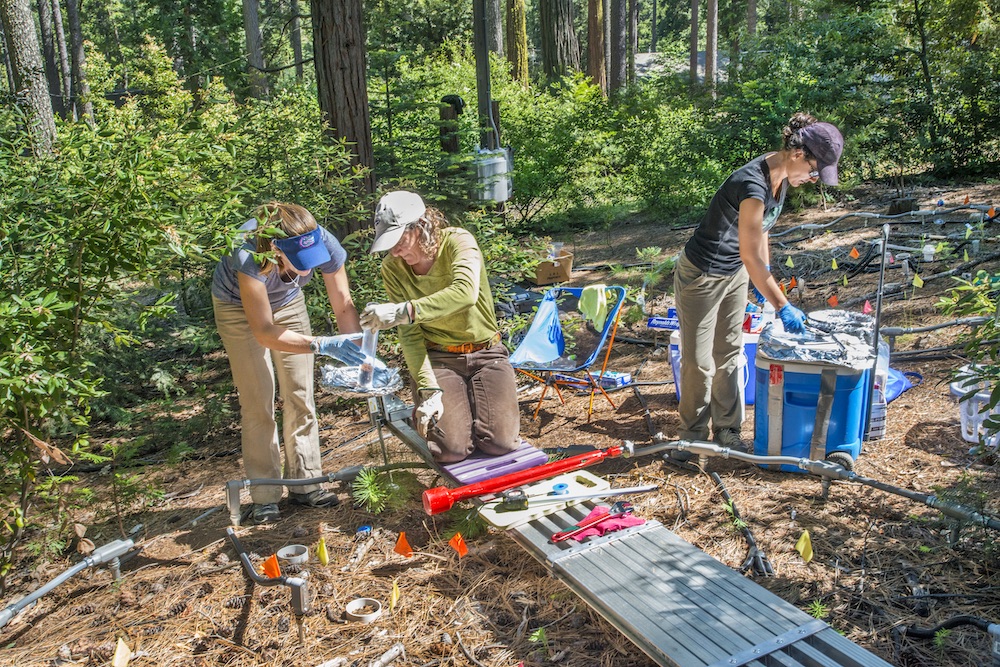
Berkeley Lab scientists take soil samples at Blodgett Forest (Credit: Roy Kaltschmidt/Berkeley Lab)
A new study led by Berkeley Lab has provided the first physical evidence that warmer temperatures lead to a significant drop in the stored carbon stock in deep forest soils. An experiment in California’s Sierra Nevada forest found that the carbon content in subsoils dropped 33% over five years.
The research team, led by Margaret Torn, artificially heated plots of soil down to 1 meter deep by 4 degrees Celsius, which is the amount of heating projected by century’s end in a business-as-usual climate scenario. (The heating followed natural diurnal and seasonal cycles.) “We heated the whole soil profile, whereas most experiments just heat the surface,” Torn said. “That deeper soil has a very large stock of carbon and because it’s old people have assumed that it’s also stable. But we’re saying, nope, actually, you can lose this deep, older carbon.”
This study was published in Science Advances, with Jennifer Soong as the lead author.
Soils contain twice as much carbon as the atmosphere does, and deeper subsoils (more than 20 centimeters) are believed to account for roughly half of the soil carbon. The same research team found in 2017 that the warmed soil led to an increase of CO2 released into the atmosphere by 34 to 37%.
The new study confirms that this release has continued unabated five years later and provides physical evidence of the net transfer of carbon from the soil, where it was sequestered as organic carbon, to the atmosphere, released as a greenhouse gas. This cycle, if confirmed over longer timescales, could constitute a positive feedback to climate change.
“Forests are currently a net sink of carbon and still have the potential to sequester large amounts of atmospheric CO2 in coming decades,” Torn said. “However, a better understanding of how deep soils will respond to warming is needed to accurately predict and plan for long-term changes.”